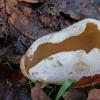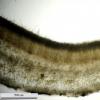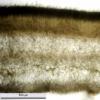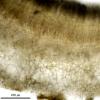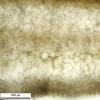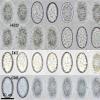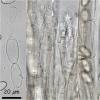
30-11-2025 12:53
 Edvin Johannesen
Edvin Johannesen
White short-stipitate apothecia found on thin twig

30-11-2025 10:47
 William Slosse
William Slosse
I recently found a collection of small Peziza sp.

27-11-2025 12:01
Thomas L√¶ss√łehttps://svampe.databasen.org/observations/10496727

27-11-2025 11:46
Thomas L√¶ss√łehttps://svampe.databasen.org/observations/10493918

17-09-2025 10:50
Heather MerryleesHi there!I am hoping for any advice on the identif

29-11-2025 08:40
 Andreas Millinger
Andreas Millinger
Hello,on a splintered part of a branch on the grou

28-11-2025 16:45
Nogueira HéctorNovember 23, 2025 Requejo de Sanabria (León) SPAI

25-11-2025 14:24
Thomas L√¶ss√łehttps://svampe.databasen.org/observations/10490522

27-11-2025 15:41
Thomas L√¶ss√łeSpores¬†brownish, typically 4-celled; 26.8 x 2.4;

27-11-2025 11:31
Thomas L√¶ss√łeCollectors notes: Immersed ascomata, erumpent thro
Peziza arvernensis 130814 149 vs. P. pesudosylvestris
Miguel √Āngel Ribes,
21-08-2014 11:18
 Hello friends
Hello friendsI have this Peziza on Fagus 6-7 cm, without latex and furfuraceous excipulum. I think it fits Ok with P. arvernensis, but I have no clear the differences with P. pseudosylvestris (guttules, flesh strates, paraphysis ??).
Asci euamyloid, with croziers.
Spores finely ornamented, without reticulum, no guttules, (14.6) 15.7 - 16.9 (17.7) x (7.8) 8.5 - 9.4 (10.1) ¬Ķm;¬†Q = (1.6) 1.7 - 1.9 (2.0) ; N = 50;¬†Me = 16.3 x 8.9 ¬Ķm ; Qe = 1.8.
Paraphysis capitated and moniliform.
Flesh with 5 layers, outside to inside: subglobose small, subglobose-angularis big (< 200 ¬Ķm), intricata, subglobose-angularis big (< 200 ¬Ķm)¬†and intricata (subhymenium).
Could you help me to separate this species from P. pseudosylvestris?
Thank you.
Miguel √Ā. Ribes
